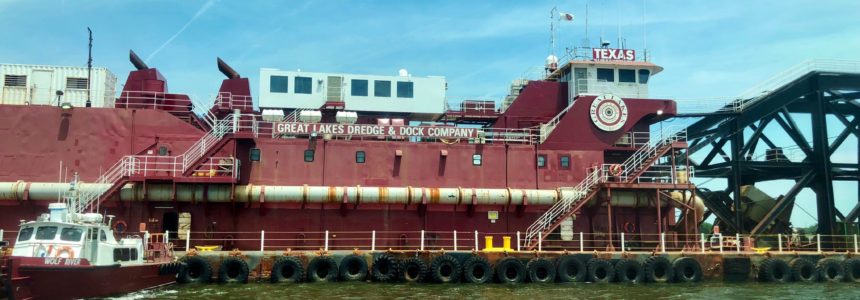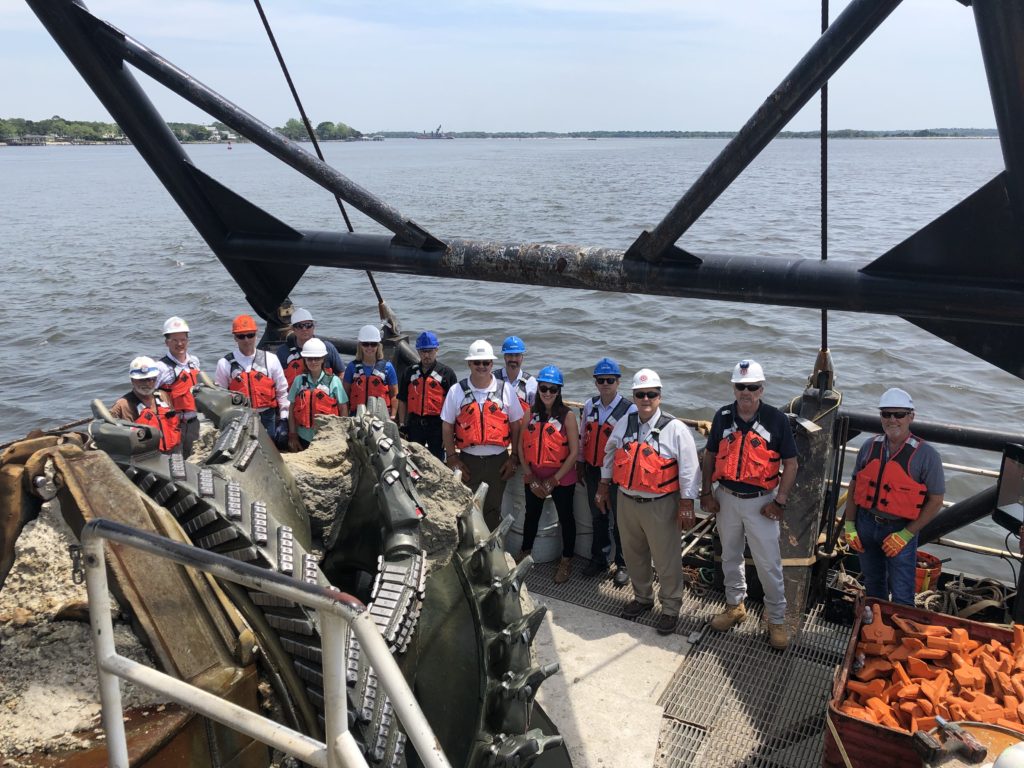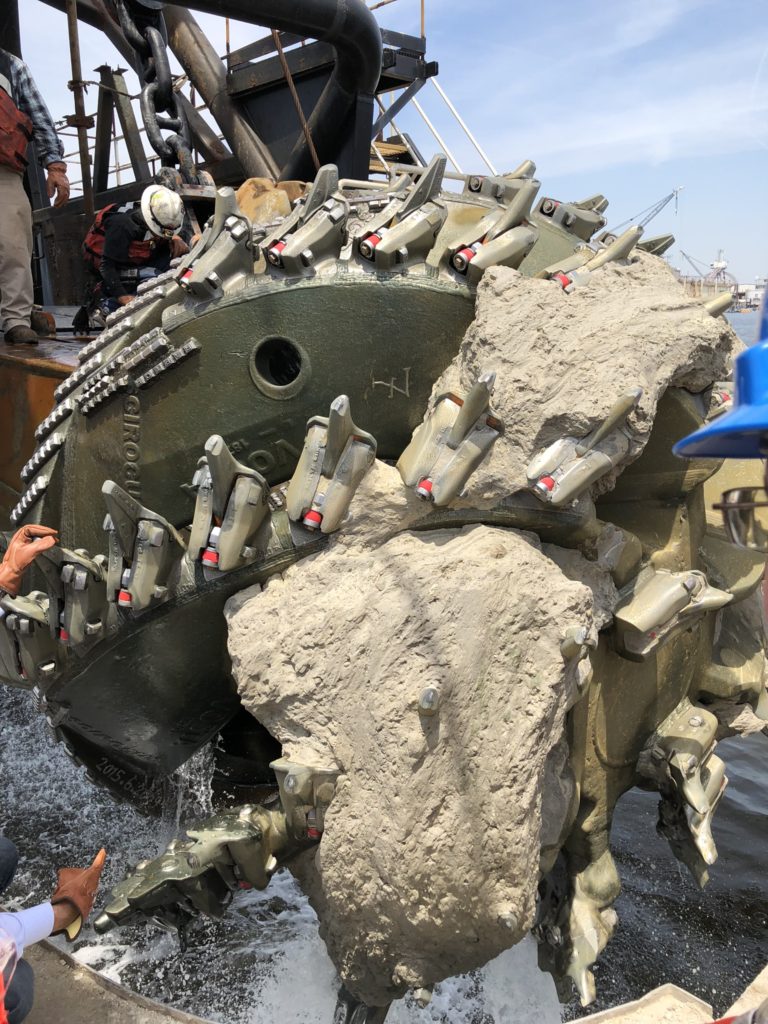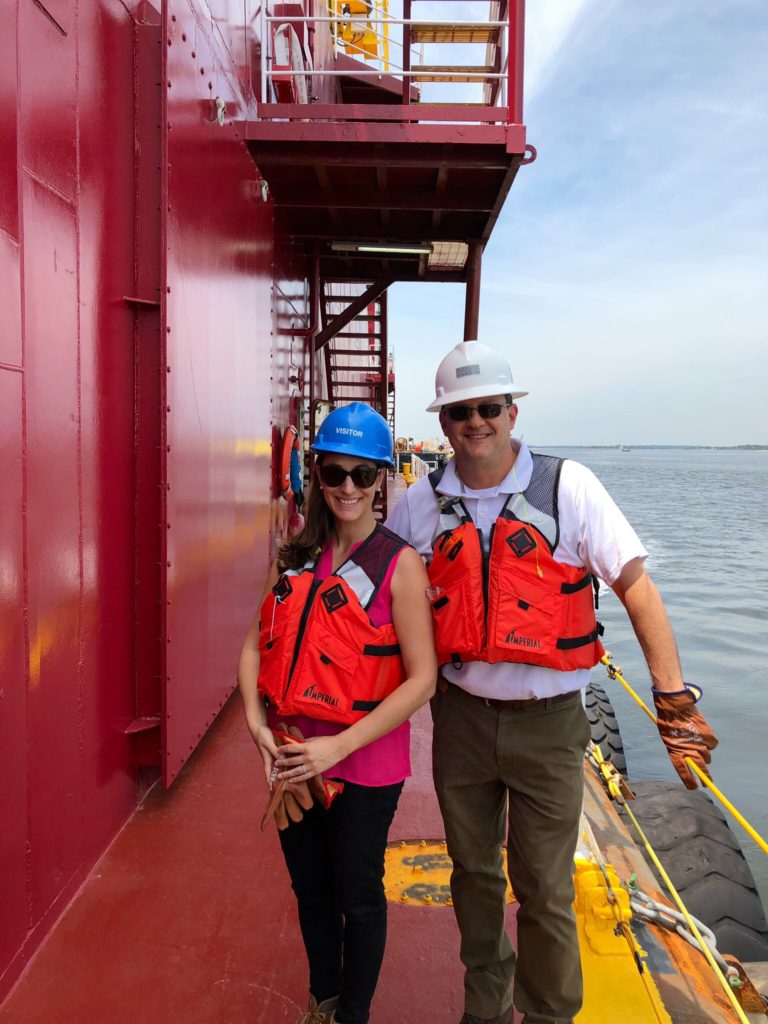News & Updates
FPC tours Great Lakes Dredge & Dock JAX harbor deepening project

It’s quite a unique experience to climb aboard the largest hydraulic dredge in the Western Hemisphere to witness the ins and outs of a complex deepening project. But at the invitation of Great Lakes Dredge & Dock (GLDD) and our environmental consultant, Littlejohn Mann & Associates, the Florida Ports Council staff got the opportunity.

In September of 2018, GLDD was awarded the $113 million base contract on the Jacksonville Harbor Construction Dredging Contract ‘B’ 47-Foot Project. GLDD expects the U.S. Army Corps of Engineers to award additional option work items on the contract by mid-2019 with a value of $97 million, resulting in a total contract award of $210 million. Dredging commenced in the fourth quarter of 2018 with an expected completion of both base contract and options in the second quarter of 2021.

Rotating cutter on the Texas.
GLDD has assigned several members of their fleet to the project, including the Texas, a cutter suction or hydraulic dredge equipped with a rotating cutter that excavates the sea floor, feeding the loosened material into a pipe and pump system that transports the material and water slurry.
Members of the FPC staff were able to board the Texas and look at this enormous cutter up close, as well as learn about GLDD’s high-intensity safety program, innovative technology and careful monitoring of environmental conditions.
When it comes to safety, it’s hard to find a company with a safety management program more integrated into all aspects of the company’s culture than GLDD’s. The company has won safety awards year after year, including the Signal Mutual Indemnity Association Ltd.’s Gerald H. Halpin Safety Excellence Award and the Western Dredging Association’s (WEDA) Annual Safety Excellence Award for a Dredging Project.
GLDD has aggressively introduced new technologies to the dredging business, from bucket and cutter design to hydrographic survey and positioning technologies, and continues to do so.
Environmental concerns are another area of excellence for GLDD. If a manatee, marine turtle or other protected species is closer than 50 feet to moving equipment or the deepening project area, the equipment is shut down and all construction activities stop to ensure the animal’s safety. Endangered species observers are constantly present and on the look-out during construction. Turbidity is monitored daily and salinity is monitored every 15 minutes during construction. Finally, biological monitoring of surrounding habitat including submerged aquatic vegetation, freshwater wetlands and fisheries will occur during construction and after, for up to 10 years but for no less than 5.

The deepening of the Jacksonville Harbor is an important project for Florida and for Jaxport with major economic benefits and employment opportunities expected from the resulting increase in trade volumes. The project has received important support from local and state authorities as well from federal authorities.
About Great Lakes Dredge & Dock
Great Lakes Dredge & Dock Corporation (“Great Lakes” or the “Company”) is the largest provider of dredging services in the United States and the only U.S. dredging company with significant international operations. The Company is also a significant provider of environmental and remediation services on land and water. The Company employs experienced civil, ocean and mechanical engineering staff in its estimating, production and project management functions. In its over 128-year history, the Company has never failed to complete a marine project. Great Lakes has a disciplined training program for engineers that ensures experienced-based performance as they advance through Company operations. The Company’s Incident-and Injury-Free (IIF®) safety management program is integrated into all aspects of the company’s culture. The company’s commitment to the IIF® culture promotes a work environment where employee safety is paramount. Great Lakes also owns and operates the largest and most diverse fleet in the U.S. dredging industry, comprised of over 200 specialized vessels.
